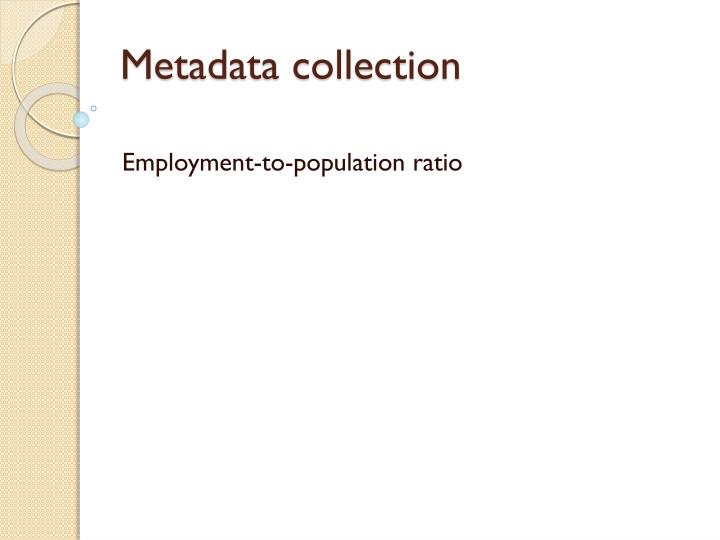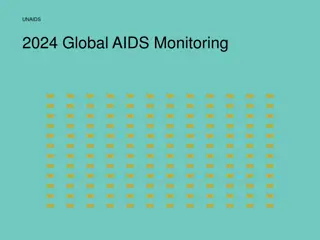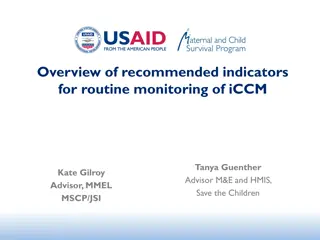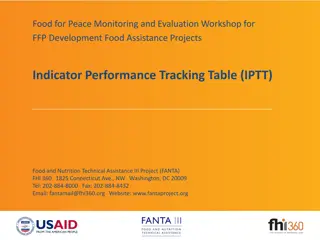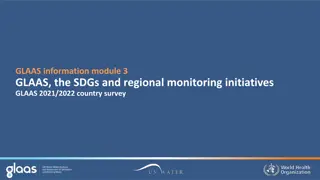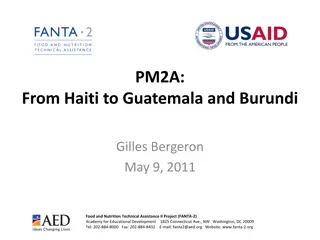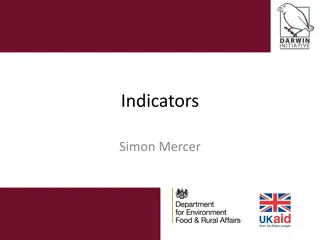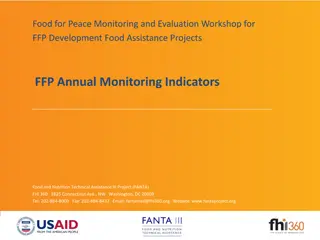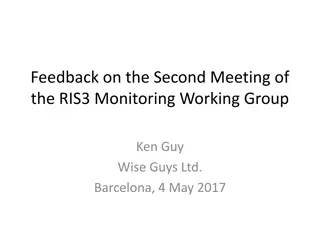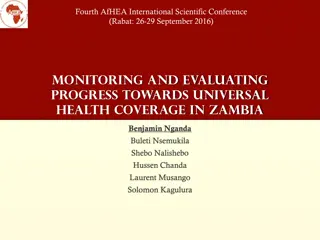Monitoring MDG Indicators in Burundi
The Ministry of Planning in Burundi established a committee in 2006 to monitor MDG indicators, leading to the adoption of additional indicators. Conditions for these indicators’ clarity, interpretation, and acceptance are outlined, followed by the committee's contributions and the availability of metadata. The metadata content includes key information for each indicator, such as definition, computation method, observations, data collection, and treatment of missing data.
Download Presentation

Please find below an Image/Link to download the presentation.
The content on the website is provided AS IS for your information and personal use only. It may not be sold, licensed, or shared on other websites without obtaining consent from the author.If you encounter any issues during the download, it is possible that the publisher has removed the file from their server.
You are allowed to download the files provided on this website for personal or commercial use, subject to the condition that they are used lawfully. All files are the property of their respective owners.
The content on the website is provided AS IS for your information and personal use only. It may not be sold, licensed, or shared on other websites without obtaining consent from the author.
E N D
Presentation Transcript
Metadata collection Employment-to-population ratio
Introduction To monitor the MDG indicators in Burundi , the ministry of planning established a committee since 2006 to assist the national statistical institute. The committee adopted a list of 181 additional indicators to the MDGs to monitor at regular basis.
Conditions for additional indicator clear and easy to interpret ; Accepted and used by the government (PRSP 1 or 2 or used by a ministry or any institution engaged in the national development) and other partners; Feet the international standards, recommendations and best practices; Has a recognized source, quantifiable and consistent.
Contribution of the MDGs monitoring committee The committee produced a report on the definitions, concepts, classifications and data sources for indicators used to monitor the achievement of the Millennium Development Goals and the additional indicators. For each additional indicator , a process of consultation between the Committee members was undertaken in collaboration with the Institute of Statistics and Economic Studies of Burundi (ISTEEBU) which is the repository for official data. The list of indicators provided has been integrated in Burundinfo (Burundi socio-economic database).
Metadata availability The national database did not include metadata for additional indicators in the beginning. For the MDGs,we just copy the international metadata. With the UNSD/DFID project, the Burundinfo team asked the committee to review their report and add metadata to all the indicators. Each indicator has a metadata and the MDGs has been adapted the national context
Metadata content For each indicator, we have the following information : (i ) a definition , (ii) method of computation , (iii) the observations and limitations , (iv) sources of discrepancies between global and national figures in some case, (v) data collection , (vi) the treatment of missing data and ( vii ) the availability of data.
Metadata for employment-to-population ratio Definition The proportion of the population of a country which is employed relative to the population of working age employment-to-population ratio is the Method of computation It is calculated by dividing the total number of employees above a certain age (at least 15 years in general) by the population of the same age. occupied population (employees) = working aged population(15-64 years) x 100
Metadata for employment-to-population ratio The employment-to-population ratio provides information on the ability of an economy to create jobs and is only a quantitative measure. It says nothing about the quality of the jobs. An increase in the ratio indicates a greater proportion of the population with a job, has a positive effect if these jobs are well-paid, productive and safe in other terms decent. A low ratio means that a large proportion of the population not directly involved in the economic activities on the productive market; because it is either unemployed or outside Determining the working age population may differ from one study to another. Age considered in different studies ranges are 15 to 64 years (this group is usually used in Burundi), 15 years and older, 15-70 years 10 years and older. Ideally, data should be disaggregated by sex and age group Observati ons and limitation the labour force.
Metadata for employment-to-population ratio Data collection Data are collected through the general census of population and housing, household surveys, surveys of enterprises, administrative records and sources based on several official estimates (the two variables must come from the same source). Missing values The treatment of missing values is done by the projection data of the general census of population and housing by exploiting data from the database on sustainable human development.
Metadata for employment-to-population ratio 1. the working age population ; it is usually 15 years and older but each country can adopt its age group. For example, in some surveys considered 10 years common used age group is 15-64 years. 2. the inter census interval (18 years for Burundi) leads to projections of the labour force (working age population) with different assumptions. When using administrative data, the denominator will be different. sources of discrepancies between global and national figures and older but the
